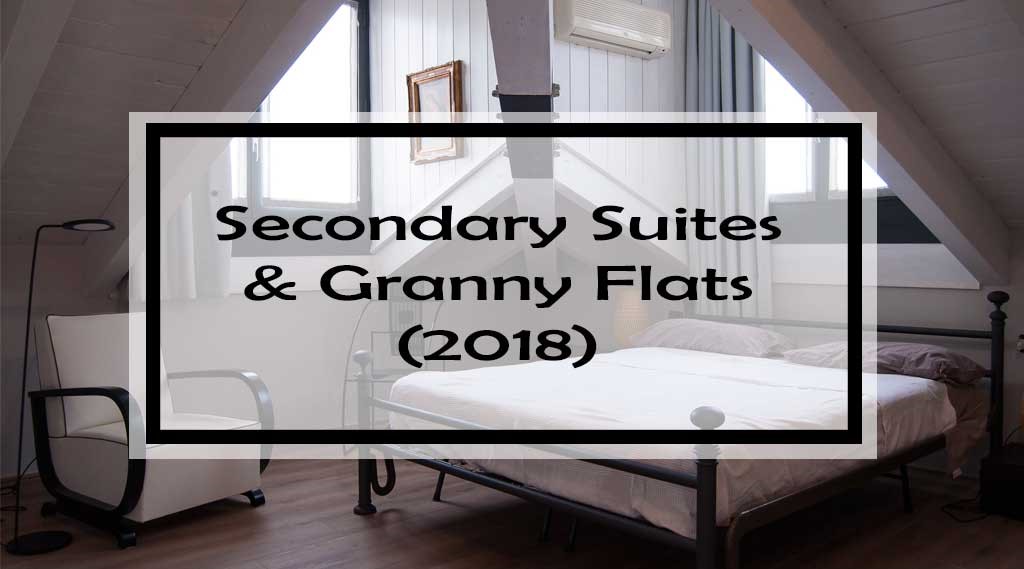Did you know that 77% of Canadian municipalities allow secondary or garden suites?
While the majority are in large cities where there is a strong need for affordable housing, even many small towns and rural areas allow for them in the appropriate zoned areas.
In this comprehensive guide, we cover:
- What a secondary suite is
- Why you should consider adding one to your home
- 19 Canadian government grant programs for secondary suites
- 3 ways to finance a secondary suite (if you don’t qualify for a government grant)
- 7 tips to get the most out of your secondary suite
Quick Navigation
Federal Secondary Suite Programs
Alberta Secondary Suite Programs
British Columbia Secondary Suite Programs
Manitoba Secondary Suite Programs
New Brunswick Secondary Suite Programs
Nova Scotia Secondary Suite Programs
Ontario Secondary Suite Programs
Saskatchewan Secondary Suite Programs
Yukon Secondary Suite Programs
What is a Secondary Suite (aka Granny Flat)?
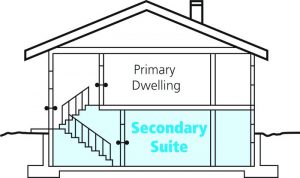
While they go by a variety of monikers—granny suites, in-law suites, accessory suites, secondary units, basement apartments—they all have the same elements: a private bathroom kitchen, and living and sleeping areas; and they must have a separate entrance.
Secondary suites are private, self-contained units, but they can share a number of features with the rest of the house such as a yard, parking area, laundry and storage space, and sometimes a hallway.
Secondary suites can also be completely separate from the main house, such as with garden suites or garage suites, but garden suites are usually temporary structures only permitted on large lots attached to a back lane or on a corner lot to ease installation.
Why Add a Secondary Suite to Your Home?
Secondary suites come with more benefits than drawbacks, despite the stigma that were once attached to them.
While the main arguments against secondary suites are that they add to parking problems and increase neighbourhood density (causing problems with things such as schools, social programs, and transit), research has shown that this isn’t actually the case. In fact, the opposite has been shown to be true.
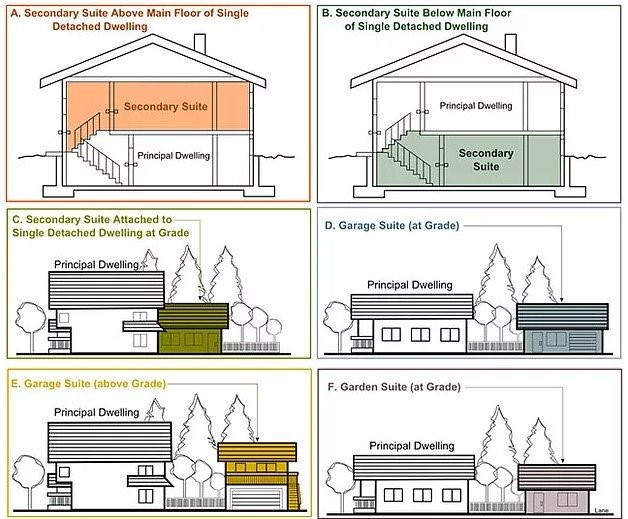
Where secondary suites are allowed, the real results actually show that they help schools stay open, help revitalize neighbourhoods, and allow seniors to stay in their homes longer. They even serve to improve transit and neighbourhood social programs.
Creating a secondary suite can allow you to pay off your mortgage faster, provide those with a low income (such as a single mother or senior) or a disability with a safe, affordable home, and even keep families together (and as a result, reduce costs such as child care).
And it doesn’t create parking problems! None of the communities in the nationwide studies were shown to have additional or increased issues with parking in the neighbourhood.
Whichever form of secondary suite you choose to build, remember to keep it legal by following zoning laws (some places allow suites in all areas, some allow both secondary and garden suites, and some only allow secondary suites in certain areas), getting all your necessary permits, following all regulations (that could include building codes, unit size, parking, and inspections and licensing), having it inspected, and building it according to code to avoid big financial headaches later.
Keep reading all the way to the end to find tips on making the process easier and less expensive.

Federal Secondary Suite Programs
While many provinces and territories in Canada have at least one program to help ease the cost of building a secondary suite—or to encourage you to make it legal—there is also one nationwide program designed to assist First Nations members:
RESIDENTIAL REHABILITATION ASSISTANCE PROGRAM FOR SECONDARY/GARDEN SUITE ON-RESERVE
This program is open to First Nations and First Nation members who own residential properties and want to create affordable, self-contained rental accommodation (secondary, granny, or garden suites) within their primary residence.
Eligible households can receive fully forgivable loans that do not have to be repaid as long as you stick to the conditions of the program, such as renting the suite to low-income tenants. The most you can get is $60,000 per unit unless you live in a northern or remote community. In that case, the amount increases by 25%.
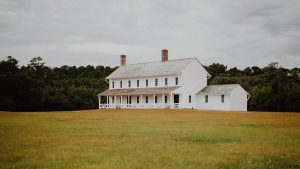
Alberta Secondary Suite Programs
EDMONTON – CORNERSTONES II: BUILDING (OR RENOVATING) A NEW SECONDARY, GARAGE, OR GARDEN SUITE
This program offers up to $20,000 or 50% off the cost of building a new secondary suite in your home. All that’s required is that you fund at least 50% of the eligible costs, be the owner of the home, have your taxes up to date, and sign a 5-year commitment.
There are certain requirements you need to follow of course, such as you must rent the suite to low-income residents in Edmonton ($57,237 for a household of two people).
This program also applies to renovating a secondary suite as well. Just make sure you use the appropriate application form. Either way, to qualify for the grant, you will need to have the suite inspected.
CALGARY – DEVELOPMENT PERMIT FEE WAIVED
While the City of Calgary doesn’t yet have a specific program with rebates or grants in place, it is slowly but surely getting on board with the benefits of having secondary suites. That is why they’ve waived the development permit fee for building new secondary suites. What used to be expensive and time consuming can now be done in just a day or two.
The program is evolving every month, so check the website often to see if the rules change and if they add any rebates or grants.
LETHBRIDGE – PRE-EXISISTING SECONDARY SUITE GRANT
Unfortunately for those who would like to create a new secondary suite, Lethbridge doesn’t have grants or rebates in place just yet, but if you have an existing secondary suite built before 2006, you’re in luck.
If you bring your existing secondary suite up to code and have it inspected, you can get up to 50% off (to a maximum of $2,500) the cost to put back in your wallet. And did you know that by making your secondary suite legal, it will increase your property value? That’s a win-win scenario!
CANMORE’S ACCESSORY DWELLING UNITS INCENTIVE PROGRAM
Are you feeling lucky? And you’ve decided to build a secondary or granny suite? Well if you live in Canmore, this is the program for you! The Town of Canmore holds an accessory-dwelling lottery every year. This is a program that takes application forms for building a secondary suite, puts them in a hat, and chooses five lucky winners. These five applicants will get 50% (up to $10,000) of eligible building costs.
But make sure you follow these rules:
- You must ensure you live in an area zoned for secondary suites.
- You must rent the suite for a 5-year period.
- You must reduce the rental rate to 90% of current market rate.
- You must rent the suite to a local resident.
- You must register the Grant Agreement on title.
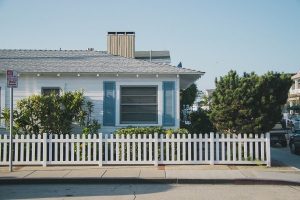
British Columbia Secondary Suite Programs
KITIMAT SECONDARY SUITE INCENTIVE PROGRAM
Kitimat’s secondary suite incentive program is a little different from others in that it offers different levels of incentives depending on who you end up renting the suite to.
As long as you sign a housing agreement, Kitimat offers a 5-year forgivable loan of up to $2,500 for any suite, up to $5,000 if you rent the suite at or below their definition of Level 1 Affordable, and up to $7,500 if you rent at or below Level 2 Affordable. You can even get a $2,500 bonus if you build the suite to be accessible.
Just check out the rules, regulations, permits, and bylaws you will need before beginning, download and complete the application form, and return it with all receipts and supporting documents to get your loan. Be advised, though, that this is a first-come, first-served program.

Manitoba Secondary Suite Programs
SECONDARY SUITES PROGRAM – PROVINCEWIDE
Patience has paid off in Manitoba. After years of research and deliberation while cities in other provinces were offering grant programs to encourage residents to build secondary suites in an effort to alleviate a lack of affordable housing, the Province of Manitoba now offers its own secondary suite financial incentive program for every Manitoba municipality.
When eligible homeowners enter a 10-year agreement with the province, they can receive a forgivable loan for 50% of the total construction and renovation costs, to a maximum of $35,000. This incentive also includes garden suites and carriage houses.
Eligibility requirements are easy to achieve:
- You must own the property and live in the primary dwelling full-time where the secondary suite is to be developed.
- You must be willing and able to enter into a legal agreement with Manitoba Housing and fulfill the requirements of the program.
- The existing primary dwelling must meet Manitoba Housing minimum safety and health standards.
- The secondary suite must be a private, self-contained, residential unit that meets all national, provincial, and municipal bylaws, codes, and standards.
- The resident of the secondary suite must have a low income (determined by Manitoba Housing).
- A lease agreement with the rental rate, at or below the maximum rental rate as set out by Manitoba Housing, is required. The monthly rental charge must include heat, water, and gas. If you rent out the unit to relatives and choose not to charge a monthly rent, a formal rental agreement is still required.
To take part in this program, simply contact Manitoba Housing to request an application form, review the requirements, and then complete and return the application form with all supporting documents.

New Brunswick Secondary Suite Programs
HOUSING ASSISTANCE FOR PEOPLE WITH DISABILITIES
If you intend to build a secondary or garden suite for someone with a disability and a low income, New Brunswick will provide eligible applicants with financial assistance of up to $24,000 of the total qualifying costs. You do, however, have to prove that you have the necessary funding to cover the remaining costs of the project.
Other eligibility requirements include meeting all health and safety standards, building in existing residential homes, and proving that creating the suite is feasible.
Contact your local Social Development office or email them to request an application.

Nova Scotia Secondary Suite Programs
PARENT APARTMENT PROGRAM
This program from Housing Nova Scotia doesn’t quite cover the depth and breadth of an entire secondary suite, but what it does do is give eligible, low-income homeowners a 10-year loan of up to $25,000 to build, at minimum, an extra bedroom and closet space. You do, however, have the option of building a bathroom and kitchen, so technically, you can still say you’re getting a loan to build a secondary suite!
To qualify, you must own and live in the home in which the space is being built, you must have good credit, and you must be below Housing Nova Scotia’s income threshold, which varies depending on your location and family size (contact them at toll-free at 1-844-424-5110 to determine your qualifying amount). Also, your renter must be over 50.
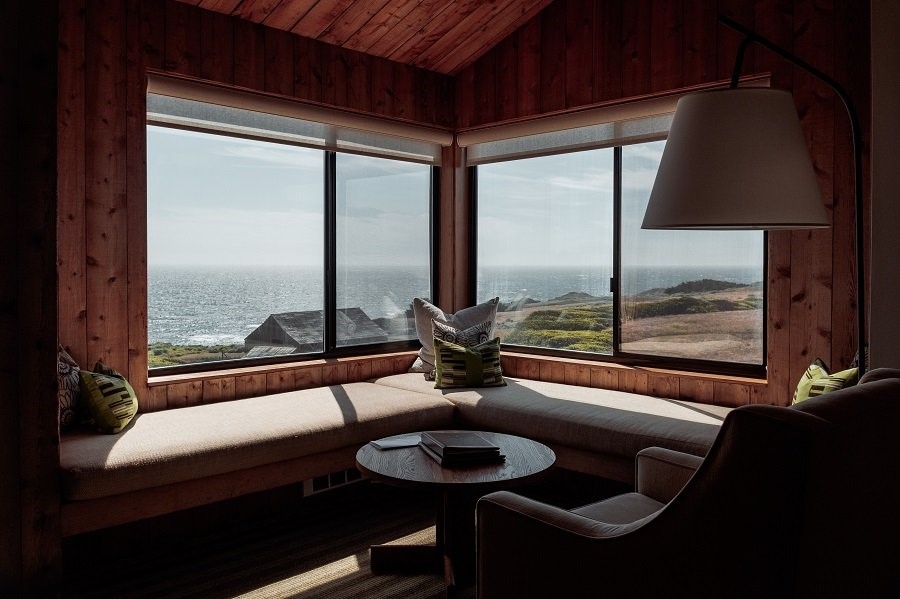
Ontario Secondary Suite Programs
Ontario residents are the lucky winners in the country right now for those interested in building secondary suites! There are multiple programs to either create or improve secondary (granny) suites.
Each program requires a limit on how much rent you can charge or be charged for the secondary suite, so look at each program closely to determine the exact requirements.
You can receive a loan or grant for up to $25,000 with these programs. Below are six municipalities that offer some form of the program:
PRINCE EDWARD-LENNOX-ADDINGTON COUNTY SECONDARY SUITES GRANT
Those who wish to build a secondary or garden suite could qualify for a grant of up to $20,000 if you agree to rent the suite to someone with a low- to moderate income. This program is also first-come, first-served!
Once you’ve been approved, you have 30 days with which to purchase a building permit. For more information, to determine if you qualify, or to apply, contact
Annette Keogh
Manager, Housing
613-354-0957 ext. 2501
1-866-354-0957 ext. 2501
PEEL RENOVATES SECOND UNITS
The program offered by the Region of Peel only applies to renovations or repairs to existing secondary suites, not the creation of new suites, so if your suite needs repairs, this program will help you fund them. There are limited funds however.
As such, this program is closed last year, but check back often for details about the 2019 program, or send them an email. Besides, that will give you more time to plan and save for your new suite.
NIAGARA SECONDARY SUITES PROGRAM
Building a secondary suite in the Niagara region is now a lot less expensive thanks to the Niagara Secondary Suites Program. Provided you follow all applicable zoning, building, fire, and property standards; sign a Letter of Agreement; start the work within 45 days of approval; allow inspections before, during, and after construction; and rent to someone considered to have a low income, you could be eligible to receive up to $25,000 in the form of a 15-year forgivable loan.
You could even get an additional $5,000 if the suite needs to be built for accessibility.
Here are a few other eligibility requirements:
- The single-family home must be valued at or below the median price (the value is different depending on your area) of single-detached homes as per Canada Mortgage & Housing Corporation’s Housing Now – Housing Market Information (2016).
- The incoming tenant’s income must be lower than $27,000 if the suite is a bachelor suite and $33,500 for a one-bedroom suite.
- The incoming tenant must complete an Income Verification Form, which must be renewed each year, 90 days before that year is up.
- The secondary suite must be a private, self-contained, residential unit that meets all national, provincial, and municipal bylaws, codes, and standards.
- You only get to participate in this program once.
Therefore, because the suite must be rented to someone with a low income, the maximum allowable rents are below:
| AREA | BACHELOR | 1 BEDROOM |
| St. Catharines | $661 | $831 |
| Niagara Falls | $566 | $809 |
| Welland | $625 | $757 |
| All Other Areas | $634 | $802 |
SIMCOE SECONDARY SUITES PROGRAM
This program offers funding to create both secondary and garden suites so that Simcoe residents have easier access to affordable housing. All you have to do is fill out the application form with all supporting documentation, agree to rent to someone with a low income, allow inspections throughout the build process, and sign a Funding Agreement.
While, as with most programs, funding is limited, you could receive as much as $25,000 per unit.
The eligibility requirements are bit numerous, but still quite doable:
- At least one member in your household must be 16 years or older, and the application must be signed by all members of the household 16 years and older.
- You must be a Canadian citizen, landed immigrant, or have refugee claimant status and have no deportation or exclusion orders under the Immigration Act (Canada) against any member of the household.
- Your property taxes must be paid and up to date.
- Your mortgage must be paid and up to date, with the total of all property mortgages, any other financing registered on title, and the program funding not exceeding the market value of your home.
- Your insurance must be paid, up to date, and be insured to its full value.
- The property must be located in Simcoe County.
KINGSTON SECONDARY SUITE AFFORDABLE HOUSING GRANT PROGRAM
Kingston also has a program aimed at helping all homeowners create secondary suites so the community has more affordable housing. The requirements to participate in this program are few, and there are two income streams that can be used simultaneously.
The only requirements on renting the suite are that you agree to rent the suite to those with a low income for an agreed-upon period (at least 5 years) and ensure your property taxes are paid and up to date.
As for the two funding streams, the first is for those in locations that require planning applications. This funding will help with required municipal application fees of up to a maximum $7,000 in the form of a forgivable loan.
The second source of funding is a forgivable loan that ends up being the lesser of $15,000 or 75% of the costs associated with developing a second residential unit.

Saskatchewan Secondary Suite Programs
SASKATOON SECONDARY SUITES FEES REBATE
If you’re building a secondary, garden, or garage suite, the City of Saskatoon will rebate 100% of the fees for building and plumbing permits and 25% of the Legalizing an Existing Suite (LES) Occupancy fee for completed suites.
To qualify, you must be building or legalizing a suite, you must have a valid building permit, and you must be an active participant of the LES program. Just download and complete the form and return it to the contact listed at the bottom of the form to apply.

Yukon Secondary Suite Programs
YUKON HOUSING CORPORATION RENTAL SUITE/SECONDARY SUITE LOAN
Those who live in the Yukon and wish to build a new secondary suite (providing zoning regulations allow it) or repair an existing suite can apply to borrow up to $35,000 per unit (but just $20,000 on rented or leased property) spread out over 15 years at an interest rate of just 1% plus prime. Download the application form to apply!
YUKON HOUSING CORPORATION’S MUNICIPAL MATCHING PROGRAM
The Yukon government is partnering with municipalities by offering one-time grant incentives for eligible secondary and garden suite projects to help increase the supply of rental housing in municipalities. This grant either matches existing municipal programs already in place or is used to meet the unique housing priorities in a community.
To be eligible, you must be approved for a development incentive program run by a Yukon municipality.
3 Ways to Finance a Secondary Suite (If You Don’t Qualify for a Government Grant)

Didn’t see your province or municipality on the list of those that have secondary suite programs in place?
Don’t worry; there are still some options open to you because just because there are no incentive programs available where you live doesn’t mean that secondary suites aren’t allowed (as long as you follow the rules).
1. Look into energy efficiency and green building incentive programs
Look into energy efficiency and green building incentive programs in your area. Even if there are no secondary suite programs offering incentives where you live, in this era of reducing carbon footprints, there are almost always incentives available for green construction and energy efficiency that will help offset the cost of constructing a secondary, garden, or garage suite.
2. Use all the tools available to reduce the cost
Think about refinancing your home. Quite often the cost of borrowing to create a secondary suite will pay for itself sooner rather than later, plus, building a new suite adds value to your home and reduces your monthly mortgage payment.
3. Buying a new home that already has a secondary suite
While it might be a stretch, buying a new home that already has a secondary suite may be a good option for you. This way, you can avoid the time and cost of construction altogether!
Just make sure you have an inspection done before you buy so you know if the home and the suite are up to code, and if not, what you need to do to bring it up to code.
Whether you take advantage of a secondary suite incentive program or not, there are so many benefits attached to building one that it’s a smart idea to go for it.
In the end, as long as you do your homework and follow the rules in your area, the end result can only be positive, whether you’re building to keep your parents close, to pay off your mortgage faster, or to increase the value of your home.
7 Tips To Get the Most Out of Your Secondary Suite
Before you start renovating, read through this list of tips to help ease your construction journey and optimize any incentive programs you have access to:
1. Double check that your area is zoned to allow secondary suite
Double check that your area is zoned to allow secondary or garden suites at all. While many do, in both rural and urban areas, there are almost always particular zones that do not allow any or only allow certain types of suites.
For example, Quebec only allows secondary suites for immediate family members. To find out if you’re okay in your area, contact your local housing and/or development department.
Double check that your area is zoned to allow secondary or garden suites at all. While many do, in both rural and urban areas, there are almost always particular zones that do not allow any or only allow certain types of suites.
For example, Quebec only allows secondary suites for immediate family members. To find out if you’re okay in your area, contact your local housing and/or development department.
2. Check your home for any issues
Check your home for any issues that may present a problem before you begin planning:
-
-
- Check your home for any issues that may present a problem before you begin planning:
- Do you have to stoop to avoid bumping your head on a beam, pipe, or duct?
- Are there traces of moisture or mould on the floors, walls, or ceiling? Is there a persistent musty odour in clothing and other objects stored in the basement or garage?
- How about newly formed cracks or other foundation damage to the walls or on the floor?
- And is there sufficient capacity in your electrical panel for the additional lights, plugs, and heating appliances needed for the secondary suite?
- Have you considered fire safety codes, unit height, and the availability of natural light?
- Does the potential space have operable windows of the right size and a separate entrance? And wait, what about radon gas in the basement?
- Are there traces of moisture or mould on the floors, walls, or ceiling? Is there a persistent musty odour in clothing and other objects stored in the basement or garage?
-
There are so many questions to go through and answer before you even begin planning that it’s a good idea to create a thorough checklist of questions and itemsto look at to make sure you don’t end up with any nasty surprises after you’ve already embarked on your project.
While it may seem daunting, it’s just smart preparation, and if you hire a contractor, the right ones will ask AND answer all those questions and more for you.
3. Determine if there are any other rules and regulations
Determine if there are any other rules and regulations that you need to follow, such as what permits you need to buy (building, development, special inspection, electrical, plumbing, gas, etc.), which building codes to follow (fire safety, exiting, smoke alarms, heating systems, ventilation, plumbing, gas and electrical, etc.) and how many inspections are required and when.
You’ll also find that there are rules about the size, placement, and contents of the unit, not to mention parking spaces for the new suite.
4. Create a spreadsheet that includes ALL potential costs
Create a spreadsheet that includes ALL potential costs you can think of. These will include not only permits and any pre-repairs you need to do but also architectural plans and/or engineering stamps; any necessary testing (radon or carbon monoxide); service, administration, and application fees; and long-term costs such as insurance, property and income taxes, and increased utility bills.
Many municipalities even require that you purchase a business licence before beginning. And don’t forget the finishings and labour!
5. Make the suite accessible
Consider putting a little extra effort and cost into making the suite accessible. Even if you don’t intend to rent to someone with a disability right now, you never know if you or someone else may need it in the future, and it’s much cheaper to build for accessibility than it is to retrofit for accessibility.
6. Keep all documents
As with anything, keep all your documents, keep them together, and keep copies!
7. There are hefty fines attached to the discovery of illegal suites
And just in case this list seems a little unnerving and makes you tempted to build an unregistered, illegal suite, keep in mind that there are hefty fines attached to the discovery of illegal suites, and many communities are cracking down on illegal suites. In some cases, you may even be ordered to decommission your new suite. And after all that work!
Now that you’ve gone through all the daunting, nitty-gritty details, you’re through the worst of the process – except maybe living through the construction itself (but there’s an end date to that!)
Just remind yourself of the many benefits attached to constructing a secondary or garden suite:
- It helps ease mortgage pain: with rising housing costs, particularly in urban areas, purchasing a house with a suite or adding a suite can make it possible for new homebuyers with limited income to purchase a home.
- It helps seniors age in place: owners on a fixed income and frail seniors can remain in their own homes longer by renting out a secondary suite. In addition, having someone living close by can provide a sense of security.
- It provides ground-oriented housing: basement units, the most common type of secondary suite, provide the greatest ease of entry and often include access to a yard.
- It offers proximity to services: detached housing neighbourhoods generally have easy access to schools, shopping, recreation centres, and other services.
- It allows for the expansion of lower cost rental housing without the need for government subsidies: municipalities frequently participate in affordable housing programs that require matching funds, land donations, or other contributions, and this is an additional way to increase the affordable housing stock while taking some of the pressure off subsidized housing.
- It results in low-impact densification: secondary suites increase the rental housing stock without significantly changing the built form of detached housing neighbourhoods. They add to the efficient use of existing housing stock, land, and municipal services; make use of underutilized infrastructure in neighbourhoods that have undergone population declines; and can help to develop more transit-supportive communities.
- It allows for the expansion of lower cost rental housing without the need for government subsidies: municipalities frequently participate in affordable housing programs that require matching funds, land donations, or other contributions, and this is an additional way to increase the affordable housing stock while taking some of the pressure off subsidized housing.
- It results in low-impact densification: secondary suites increase the rental housing stock without significantly changing the built form of detached housing neighbourhoods. They add to the efficient use of existing housing stock, land, and municipal services; make use of underutilized infrastructure in neighbourhoods that have undergone population declines; and can help to develop more transit-supportive communities.????
- It creates affordable housing: secondary suites expand the supply of lower cost rental housing, providing the opportunity for renters to live in a lower density residential neighbourhood.
- It promotes smart development: secondary suites increase density within established communities. As a result, pressure to build new developments at the community’s edge is reduced. By reducing peripheral development, natural and agricultural land remains intact for recreational purposes, habitat protection, and agricultural economies.
